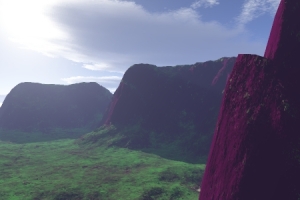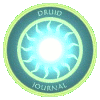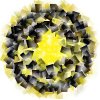In the previous two posts in this series, I reviewed Steve Pavlina‘s new book Personal Development for Smart People, and suggested a way in which his seven principles (Truth, Love, Power, Courage, Authority, Oneness, and Intelligence) could be mapped to the seven visible planets in astrology (the Sun, the Moon, Jupiter, Mars, Saturn, Venus, and Mercury, respectively). In this post I’ll carry it further, and tackle the correspondence of these principles with the Tarot.
Astrology and the Tarot
 Since we already have a correspondence between Steve’s seven principles and astrology, perhaps it makes sense to start by looking for correspondences between astrology and the Tarot. If there is a simple mapping, then the mapping from Steve’s principles through astrology to the Tarot should be just a short step.
Since we already have a correspondence between Steve’s seven principles and astrology, perhaps it makes sense to start by looking for correspondences between astrology and the Tarot. If there is a simple mapping, then the mapping from Steve’s principles through astrology to the Tarot should be just a short step.
Unfortunately, there is no universally accepted correspondence between astrology and the Tarot. At first glance, it should be simplicity itself: there are twenty-two trumps, and there are ten planets and twelve signs, and ten + twelve = twenty-two… So surely there should be one card for each of the ten planets, and for each of the twelve signs. However, getting the mapping right is problematic.
Here is one popular correspondence system:
0: Fool: Uranus
1: Magician: Mercury
2: High Priestess: Moon
3: Empress: Venus
4: Emperor: Aries
5: Heirophant: Taurus
6: Lovers: Gemini
7: Chariot: Cancer
8: Strength: Leo
9: Hermit: Virgo
10: Fortune: Jupiter
11: Justice: Libra
12: Hanged Man: Neptune
13: Death: Scorpio
14: Temperance: Sagittarius
15: Devil: Saturn
16: Tower: Mars
17: Star: Aquarius
18: Moon: Pisces
19: Sun: Sun
20: Judgement: Pluto
21: World: Capricorn
There are some parts of this system that are intuitively compelling (eg Magician – Mercury, Fortune – Jupiter, Justice – Libra, Star – Aquarius…), and it would seem that Waite had something like this in mind when he designed the Rider-Waite Tarot, because many of the images reflect this correspondence (note the ram’s heads on the Emperor’s throne, for example).
However, to my mind at least, there are at least as many parts of this system that are extremely questionable. How is the Hermit to be paired with the Virgin? Wouldn’t Saturn be a better fit? The matching up of Leo with Strength initially looks nice, since there’s actually a lion right there on the card; but the lion is being restrained by a young woman — what does this have to do with Leo’s leadership and flamboyance? The assignments of the three higher planets (Uranus, Neptune, and Pluto) seem particularly odd to me. After all, when the Tarot was designed, these planets weren’t even discovered. And if we’re going to include planetoids like Pluto, why don’t we include Chiron, Ceres, and Eris? Do we need more Tarot cards? Where do we stop?
At this point I think it would be helpful to look briefly at the history of the Tarot, and its internal structure, instead of trying to brute-force shoehorn it onto the sky.
The Triumphs
In Roman times, triumphant parades — especially military parades — were extremely popular. When generals returned from winning campaigns, they would march down the streets of Rome. First the trumpters would march, then the spoils of war in carts would come, then the conquered prisoners, then slaves and servants of the general, and finally the general himself and his soldiers. The soldiers were placed behind the general as a sign of respect; for as is evident, the triumphant parade progressed in respect and power as it went on.
The parades lived on long past the end of the Empire. For a thousand years and more, villages in Italy would hold triumphant parades, with representatives of each of the social classes — serfs, landholders, clergy, knights, and the local lord, all in order.
The first Tarot decks in Italy were evidently designed to replicate the idea behind these triumphant parades. Generally speaking, each card of the Major Trumps “triumphs” over the one before: the High Priestess trumps the Magician, the Empress trumps the Priestess, the Emperor trumps the Empress, the Heirophant trumps the Emperor… and Love conquers them all.
Above and beyond earthly Love, the progression turns to virtues, spirits, and trials that test human souls; until the final Trump is the entire World. The Fool does not appear in the progression; he is unordered relative to the others.
A fascinating feature of the early Tarot decks (pointed out by Robert Place in the Buddha Tarot) is that, while there was a lot of variation in the card orders, especially up among the virtues and spirits and trials, the variation was essentially limited by an implicit three-part structure. The sequence of Trumps appears to have been subconsciously divided into three sections, and each card always appeared within one section, never in the others. The three sections correspond well with Campbell’s three phases of the Hero’s Journey: Departure, Initiation, and Return.
In Departure, the hero gradually leaves behind the physical everyday world; and this is shown in the Trumps by a progression of earthly power, which culminates in the greatest worldly power, Love. In Initiation, the hero strips away illusions and reaches a greater perspective on the world; and this is shown in the Trumps by cards such as Justice, Death, and the Hermit, all representing the power of truth. And in the Return, the hero reaps his reward — union with the universe — and brings his message back to humanity; and this is shown in the Trumps by cards such as the Sun and Moon, Judgement and the World.
The first thing that jumped to mind when I considered marrying Steve Pavlina’s seven principles with the Tarot was this three-part structure. Steve’s three core principles, Power, Truth, and Love, correspond extremely well with this three part structure. Power, the manipulation and control of the world, is exemplified by the first seven cards, with its progression of earthly power from the Magician up through the Lovers. Truth, the reality of the universe, is exemplified by the next seven cards, with their progressive tearing down of illusion, delusion, fear, and other structures that have outlived their usefulness. Love, the reunion with All, is exemplified by the last seven cards, with their archetypes of the great lights of the world, the reunion of earthly and divine, and the final card, the World itself.
The Spiral of the Hero’s Journey
So now we have twenty-one Trumps divided into three parts, one for each of the primary principles: Power, Truth, and Love. Each of the three sections has, of course, seven cards; and remarkably enough, Steve has seven principles.
A fascinating structure emerges — one in which each of the seven principles is repeated three times as the hero ascends through the three prisms of Power, Truth, and Love. Within each of the three sections, it is straightforward to find a satisfying (to my mind) correspondence with each of Steve’s seven principles. Here is my reading:
I: POWER (Jupiter)
1: Magician: Intelligence (Mercury)
2: High Priestess: Truth (Sun)
3: Empress: Oneness (Venus)
4: Emperor: Power (Jupiter)
5: Heirophant: Authority (Saturn)
6: Lovers: Love (Moon)
7: Chariot: Courage (Mars)
II: TRUTH (Sun)
8: Strength: Power (Jupiter)
9: Hermit: Truth (Sun)
10: Fortune: Love (Moon)
11: Justice: Authority (Saturn)
12: Hanged Man: Courage (Mars)
13: Death: Oneness (Venus)
14: Temperance: Intelligence (Mercury)
III: LOVE
15: Devil: Authority (Saturn)
16: Tower: Courage (Mars)
17: Star: Oneness (Venus)
18: Moon: Love (Moon)
19: Sun: Truth (Sun)
20: Judgement: Power (Jupiter)
21: World: Intelligence (Mercury)
0: Fool: None (Earth?… )
Some of these may be rather surprising, especially where the traditional astrological correspondences are flouted. Below I’ll discuss each card and why I think the symbolism matches up.
1: Magician: Intelligence (Mercury)
Power of Intelligence. Here, my interpretation matches the standard. Mercury, the patron of wizards and healers, is universally agreed to be the ruler of this card, and intelligence (both in its mundane and esoteric meanings) is inherent to its power. This card is intelligence made manifest, the miracle worker active in the world.
2: High Priestess: Truth (Sun)
Power of Truth. Traditionally, the High Priestess is associated with the Moon, so originally I had this card assigned to Love. But the deeper meanings of the card have always been associated with secrecy, revealing hidden teachings, and opening the doors to deeper mystery. This card is power over the truth, and the power of truth.
3: Empress: Oneness (Venus)
Power of Oneness. This card is traditionally associated with Venus, perhaps the most powerful goddess in the Roman pantheon. The Empress is the human embodiment of the unity between the people and the land. In many traditional Indo-European cultures, the king is actually ritually married to the land itself.
4: Emperor: Power (Jupiter)
Pure Power. The Emperor exercises and embodies complete power in the physical realm.
5: Heirophant: Authority (Saturn)
Power of Authority. Authority mixes Power and Truth. The Heirophant embodies the natural authority that spiritual truth exercises in the world.
6: Lovers: Love (Moon)
Power of Love. This is the power of love in the world; Love as an agent of control and of transformation.
7: Chariot: Courage (Mars)
Power of Courage. Sallying forth into the world, the power of courage is one of reaching out with love and for love. I will always associate this card with the story of Siddhartha riding out in his chariot to see the world outside his father’s gardens for the first time, desiring to see the people over which he would rule, and seeing the Four Sights that would set him on the road to his destiny.
8: Strength: Power (Jupiter)
Truth and Power. Here, the power of the truth is made plain — more powerful than any merely physical thing.
9: Hermit: Truth (Sun)
Pure Truth. The Hermit is the seeker of the truth; he is the recluse that withdraws to find the deepest truth within.
10: Fortune: Love (Moon)
Truth and Love. Our emotional relationship to the truth is one of ups and downs. When we are aligned with the truth, we rise high on the wheel; when we are opposed to it, we fall. Love and Truth together are the great teachers.
11: Justice: Authority (Saturn)
Truth and Authority. When Truth is made manifest in the world, when true Authority is exercised, justice is done.
12: Hanged Man: Courage (Mars)
Truth and Courage. Like the Hermit, the Hanged Man is bound to the Truth. I always think of Odin hanging from Yggdrasil, and of course Jesus from the cross. These are spirits who showed courage in the name of truth.
13: Death: Oneness (Venus)
Truth and Oneness. Surprised? The flip side of Oneness is the death of the individual self. In order to experience oneness and unity, the self must grow and change, must experience things beyond itself. This change, this transformation, is a very real death.
14: Temperance: Intelligence (Mercury)
Truth and Intelligence. Bringing our intelligence into alignment with Truth allows us to balance the forces at work — especially fitting here, since Intelligence is the balance of Truth, Love, and Power.
15: Devil: Authority (Saturn)
Love and Authority. A fascinating pairing — note the traditional two figures in the card, which echo the Lovers? The card is also traditionally associated with Saturn and Capricorn. The flip side of Love is fear, and this card is all about fear — especially fear of Authority, which is the principle diametrically opposite to Love in Steve’s system.
16: Tower: Courage (Mars)
Love and Courage. This card is about breaking down systems that are no longer useful. Like the Hanged Man (also Courage), it is suffering endured for a higher good — in this case, Love.
17: Star: Oneness (Venus)
Love and Oneness. One of the best-loved cards in the deck, the Star is welcome in any reading. It speaks of help on the way, and unity with the beyond.
18: Moon: Love (Moon)
Pure Love. What else could the Moon card be?
19: Sun: Truth (Sun)
Love and Truth. The Buddha Tarot’s version of the Sun card shows the male Buddha in a sexual embrace with the female aspect of Buddhahood. This card is Truth, but specifically the truth of universal Love, and the ecstasy that flows from it.
20: Judgement: Power (Jupiter)
Love and Power. From the standpoint of the Hero’s Journey, this is the Hero returned and bringing his message of Power, Truth and Love to the world. This is an act of Love on the Hero’s part, an exercise of Power for the sake of Love (quite different from the Power of Love, as we saw in the Lovers).
21: World: Intelligence (Mercury)
Love and Intelligence. Here are the principles integrated in Love; all brought together and commingled with compassion. And so we return to Intelligence again, as we began.
And Last
Working with these principles has been a great exercise for me, and has transformed my understanding of these ancient symbols. To draw new connections, for example, between the places where Oneness emerges in the symbols — Venus, Libra, Taurus; the Empress, the Star, and Death — is to understand each symbol more deeply and viscerally, and to clarify where they fit into the larger schemes. I hope this has been similarly illuminating for you as well.
May you wield the power of Jupiter’s thunder, may you walk in Apollo’s light of truth, and may your heart glow with the wild love of Artemis; and may Power, Truth, and Love accompany you always.






Leave a comment